Trip To The Hambacher Schloss

Hambach Castle is located on the mountain Schlossberg (literally translated "Castle mountain"; elevation: 325m) in the eastern outskirts of the Palatine Forest. The estate ruled both as a protection castle and as a robber baron castle over the trade roads and the northern route of the Anterior Palatinate section of the Way of St. James.
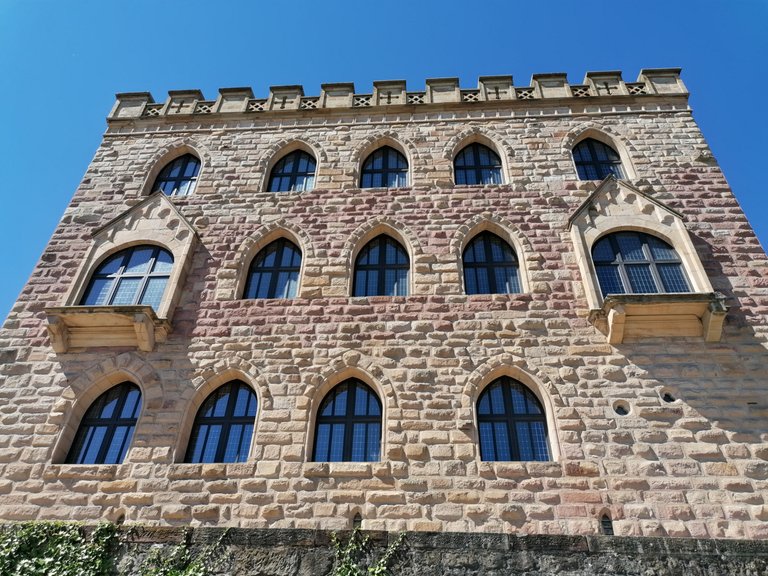
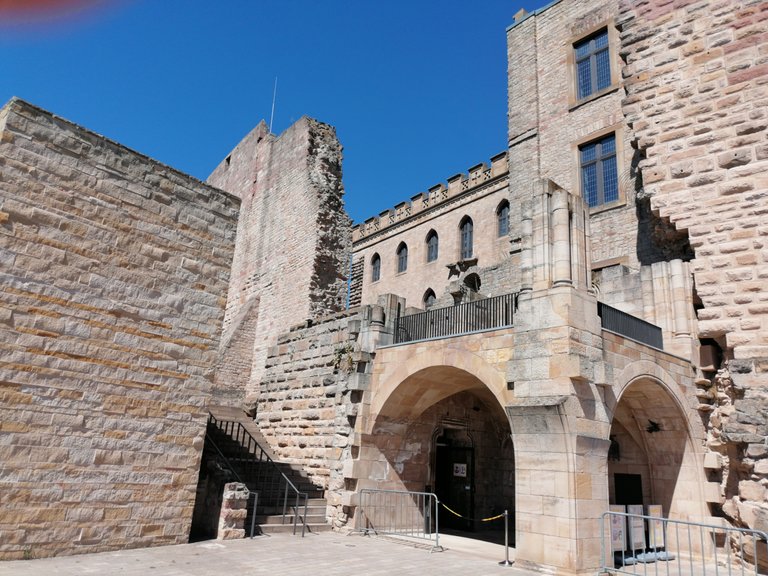

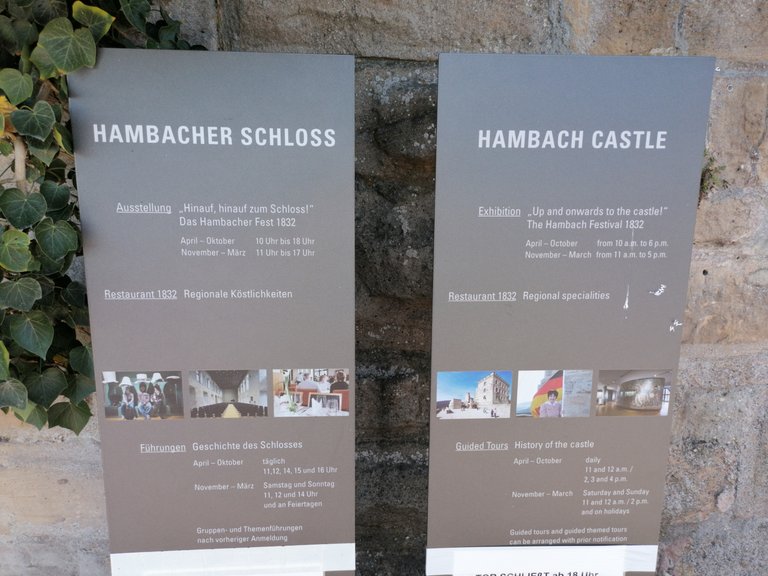

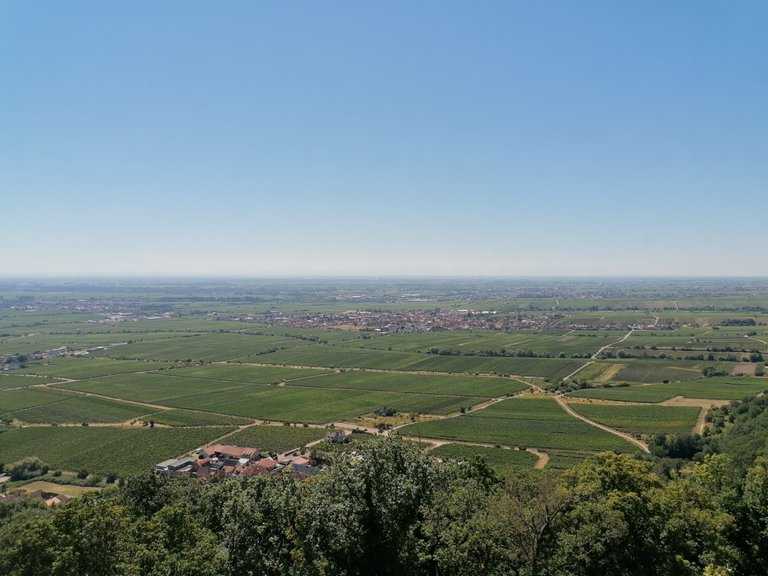
History
Before 1832
Archaeological finds prove that the area of Hambach Castle was used in late Roman times. In late Carolingian Dynasty times and Ottonian dynasty times a castle of refuge was built there. Portions remain in front of and under the outer ring wall.
Probably in the first half of the 11th century, a new castle named Kästenburg (translated in the Palatinate dialect as the "chestnut castle") was built inside the former estate. It got its name because of the surrounding magnificent sweet chestnut forests. There is little known about its early history; there are speculations without any proof that it was founded as an Imperial Castle (Reichsburg) or that Emperor Henry IV had started his Walk to Canossa here in 1076. The only thing certain is that between 1090 and 1104 bishop Johann I of Speyer signed over the estate together with Castle Meistersel to the Bishopric of Speyer, which stayed the owner to the end of the 18th century.
Aerial view of the castle
The big estate was said to be one of the most important facilities of the Bishopric of Speyer in the late Middle Ages. This is indicated by the many residencies of the bishops since 1180. Despite this the first "Burgmannen" primary were known as Imperial Ministeriales and not as commissionaires of the church, especially the first one, Burkhard of Kästenburg, who is provably in the imperial service from 1154 to 1186. His brother Trushard of Kästenburg, proven 1178–1201, had a brilliant career at the court of Henry VI.
The descendants of Trushard had no connection to the Kästenburg. Other houses of "Burgmannen" took place here, among them since 1256 the ministerial family Schnittlauch of Kästenburg, the Earls of Zweibrücken (1284) and the Earls of Veldenz (1311).
Especially during the 13th century, larger building projects took place. Nikolaus I was consecrated as Bishop of Speyer in the castle chapel on July 12, 1388. More construction was done at the end of the 14th century and in the second half of the 15th century by the bishops Nikolaus I and Matthias I. The castle was the home for the Episcopalian document archive at the end of the 14th century.
Later the importance of the Kästenburg declined, one reason being the erection of the new estate Hanhofen after 1414/20 (later Marientraut). In 1466 the Kästenburg was the property of the Bishopric of Speyer, which Prince-elector Friedrich I protected for Bishop Matthias. An inventory taken one or two years before shows the castle still decently equipped.
During the German Peasants' War in 1525 the Kästenburg was occupied and looted, but not destroyed, by the "Nußdorfer Bauernhaufen" (literally translated: Nußdorf peasant bunch). In 1552 it was conquered and burned down by troops of Margrave and mercenary-leader Albrecht Alkibiades of Brandenburg to whom a tribute of 150,000 gulden was denied. Bishop Marquard of Speyer, who was in office from 1560–81, only arranged a very provisional rebuilding of the residential buildings and made the ruin the seat of a forester.
The former fortress was undamaged during the Thirty Years' War, but during War of the Palatinian Succession in September 1688, the abandoned castle was destroyed by French soldiers. It was once more provisionally restored from 1701 to 1703.
In 1797 the castle was declared to be French government property. In 1816 after the Congress of Vienna the ruin became the property of the Kingdom of Bavaria together with the complete "linksrheinische Pfalz" (literally translated: left-Rhine Palatinate). A short time later citizens of Neustadt gave the worthless estate to the Bavarian King Maximilian II as a "wedding present". Because of this, the castle is also called "Maxburg" in colloquial language. In 1844 Bavaria began to rebuild the castle in neo-gothic style, August von Voit had provided the plans.
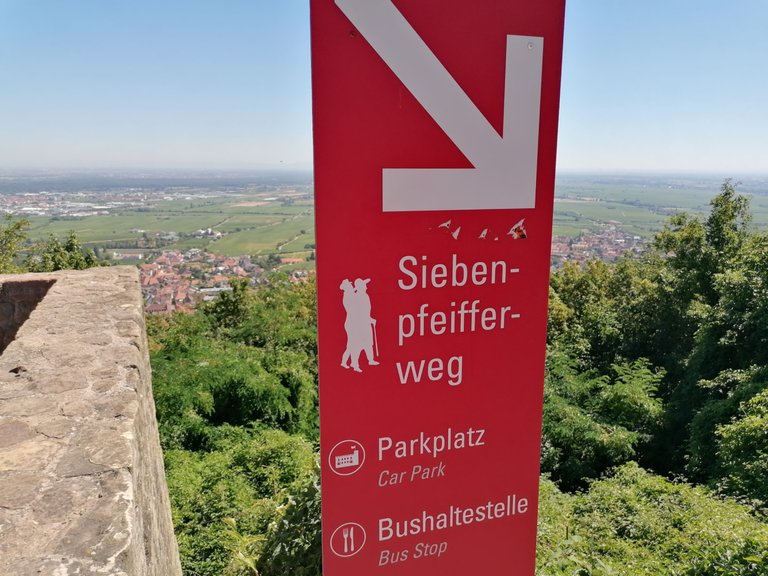
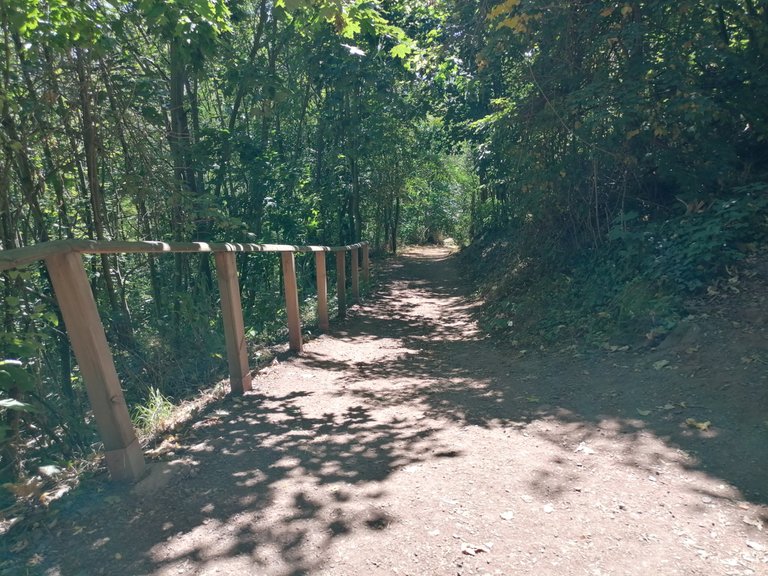
Quelle Text
Great view from up the Castle, must be a beautiful place to visit.
Source
Copying/Pasting full or partial texts with adding very little original content is frowned upon by the community. Repeated copy/paste posts could be considered spam. Spam is discouraged by the community and may result in the account being Blacklisted.
If you believe this comment is in error, please contact us in #appeals in Discord.